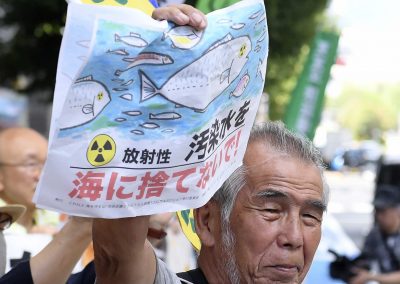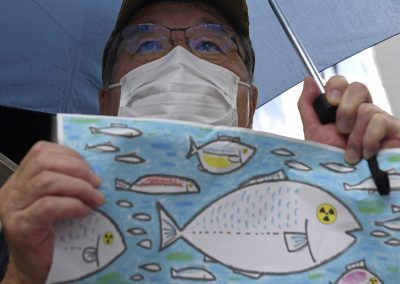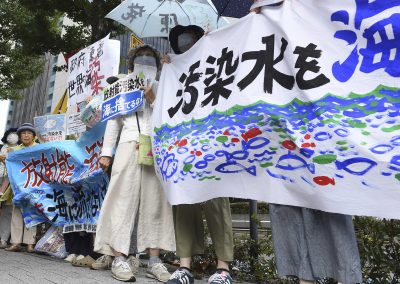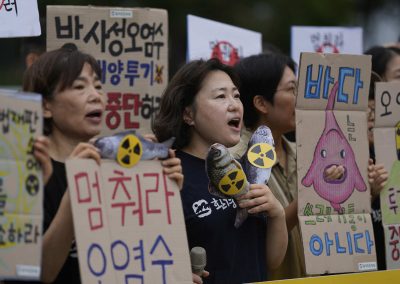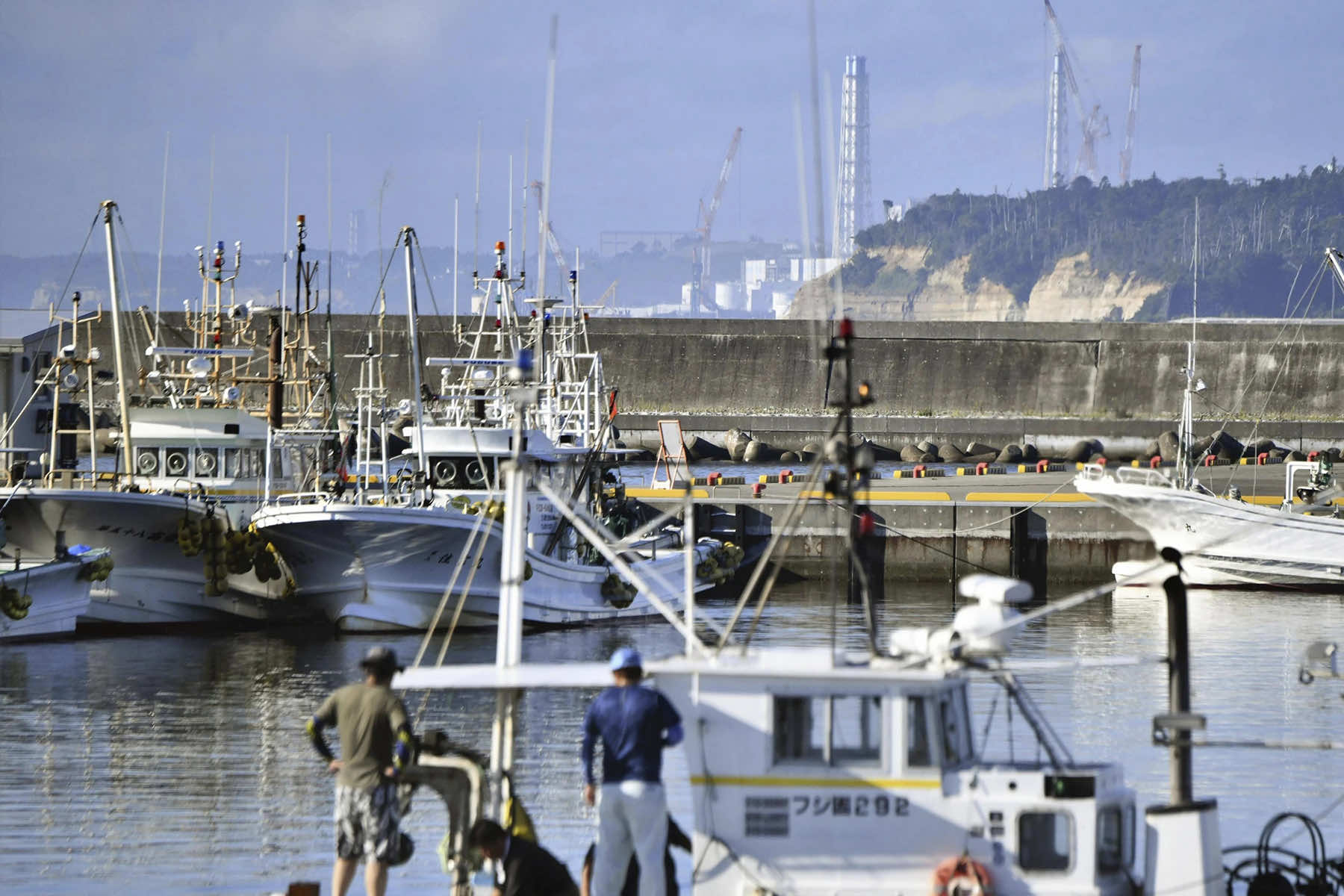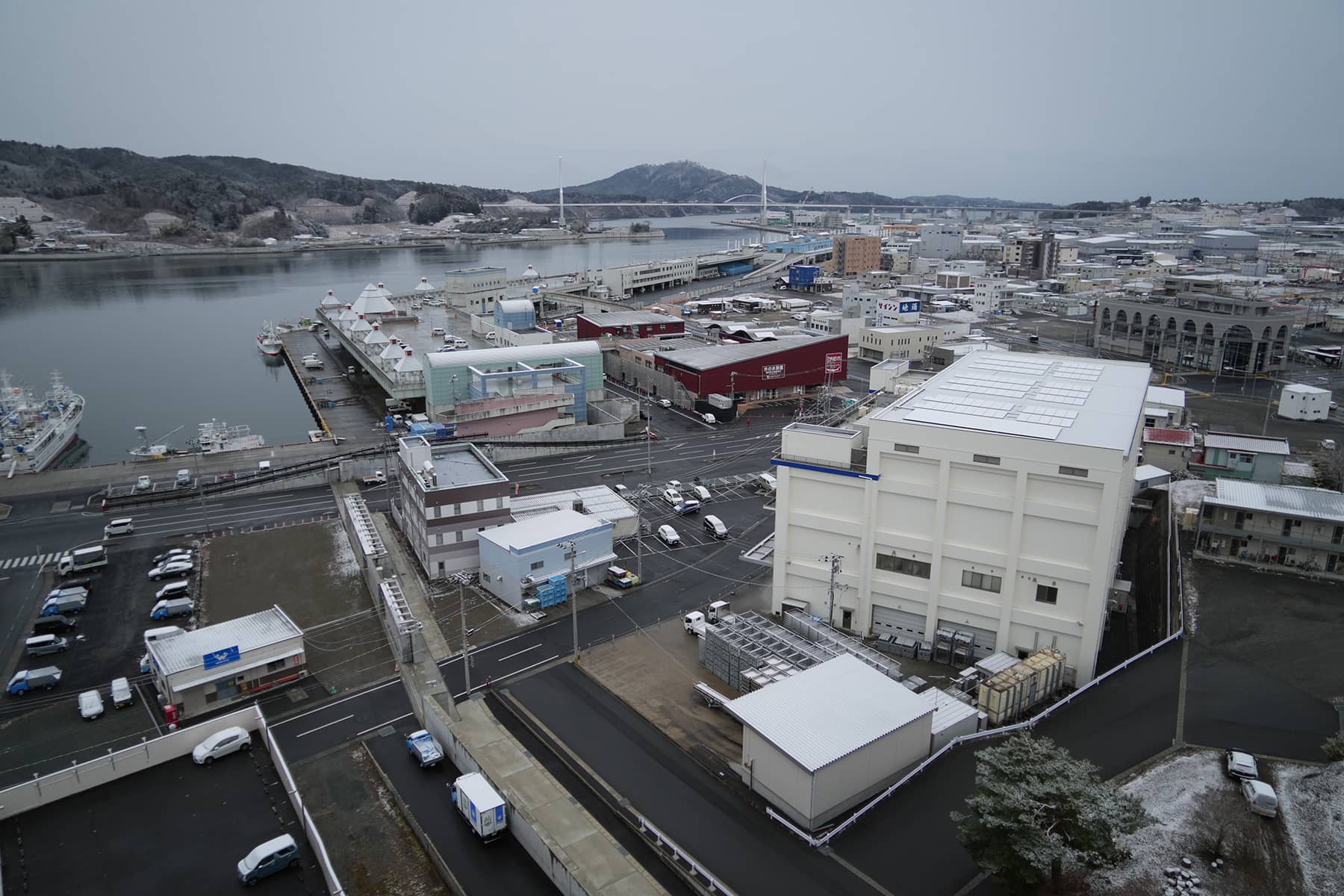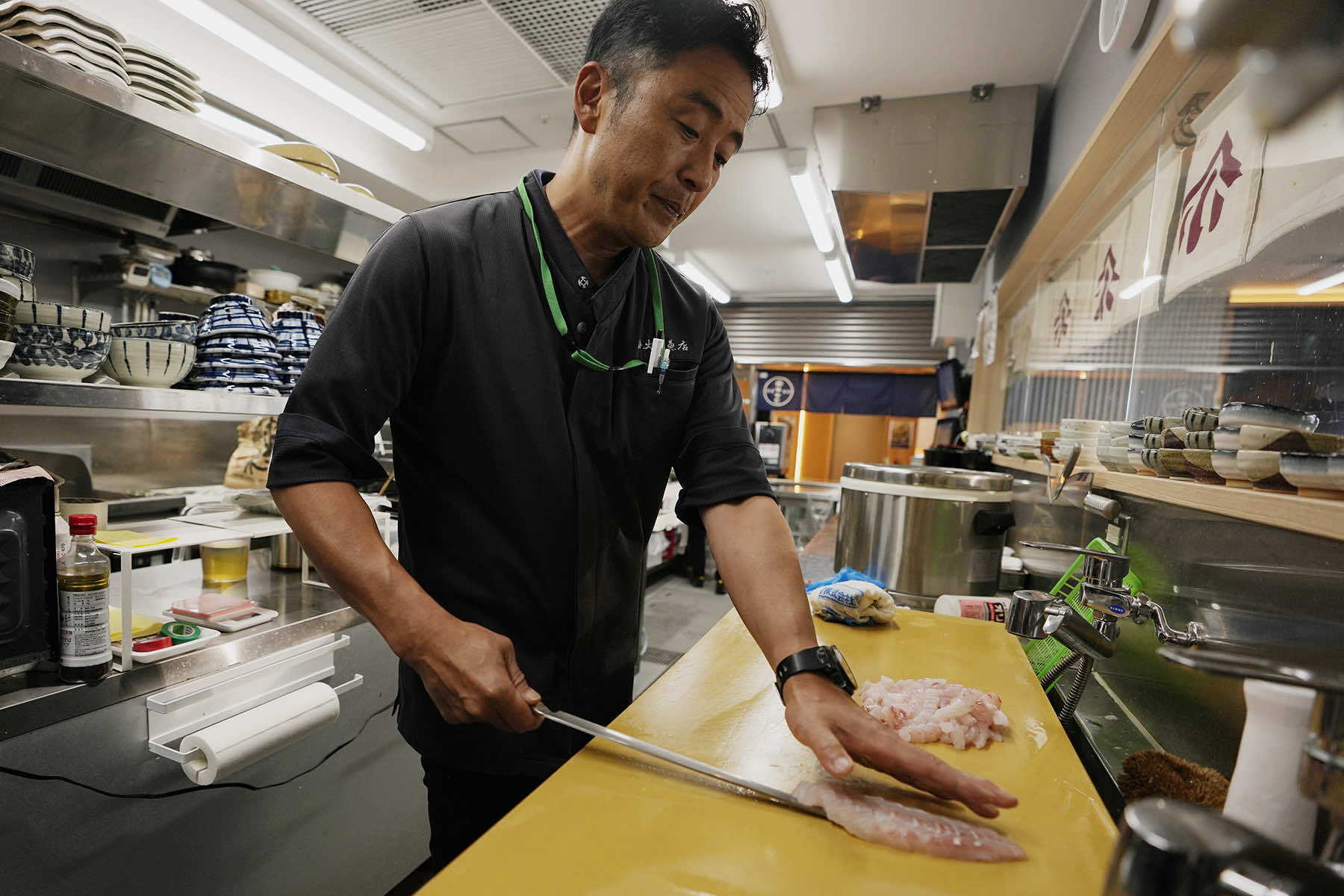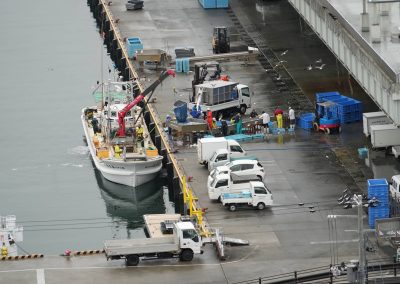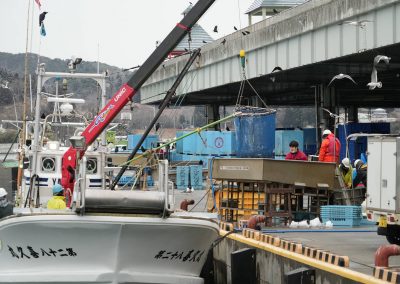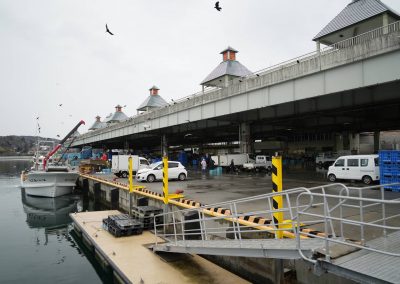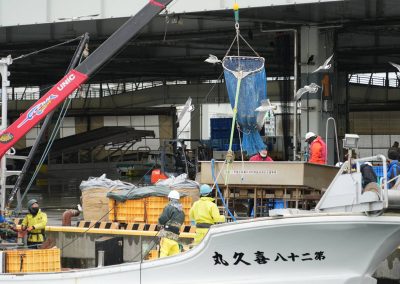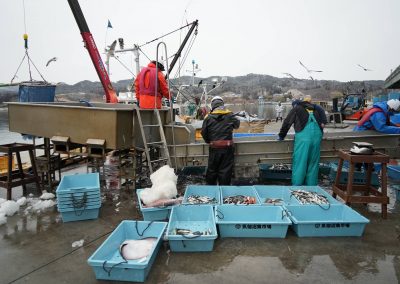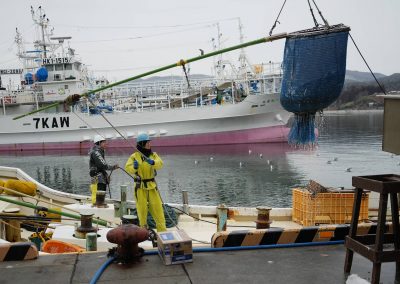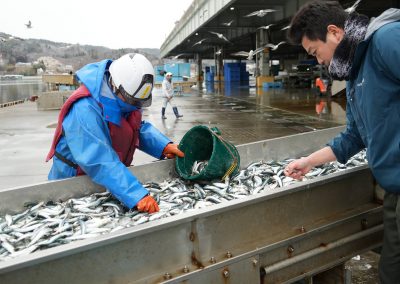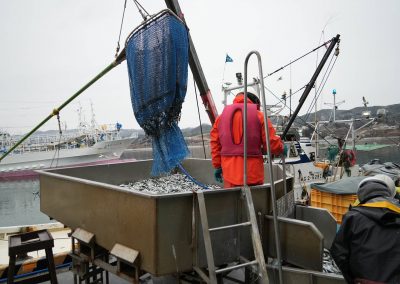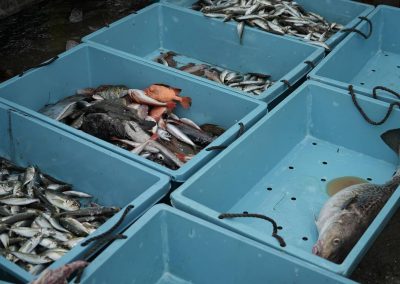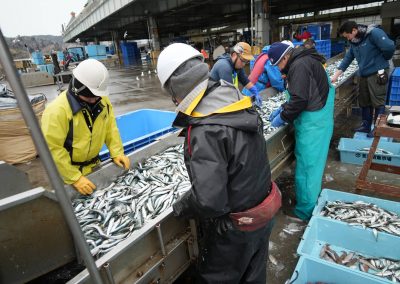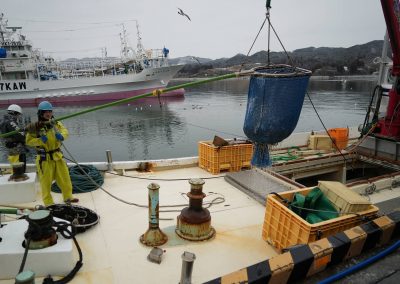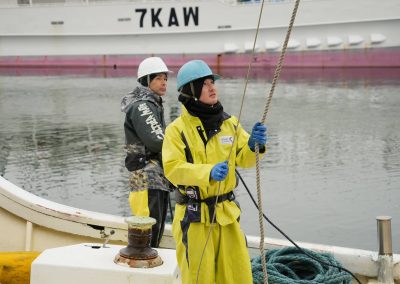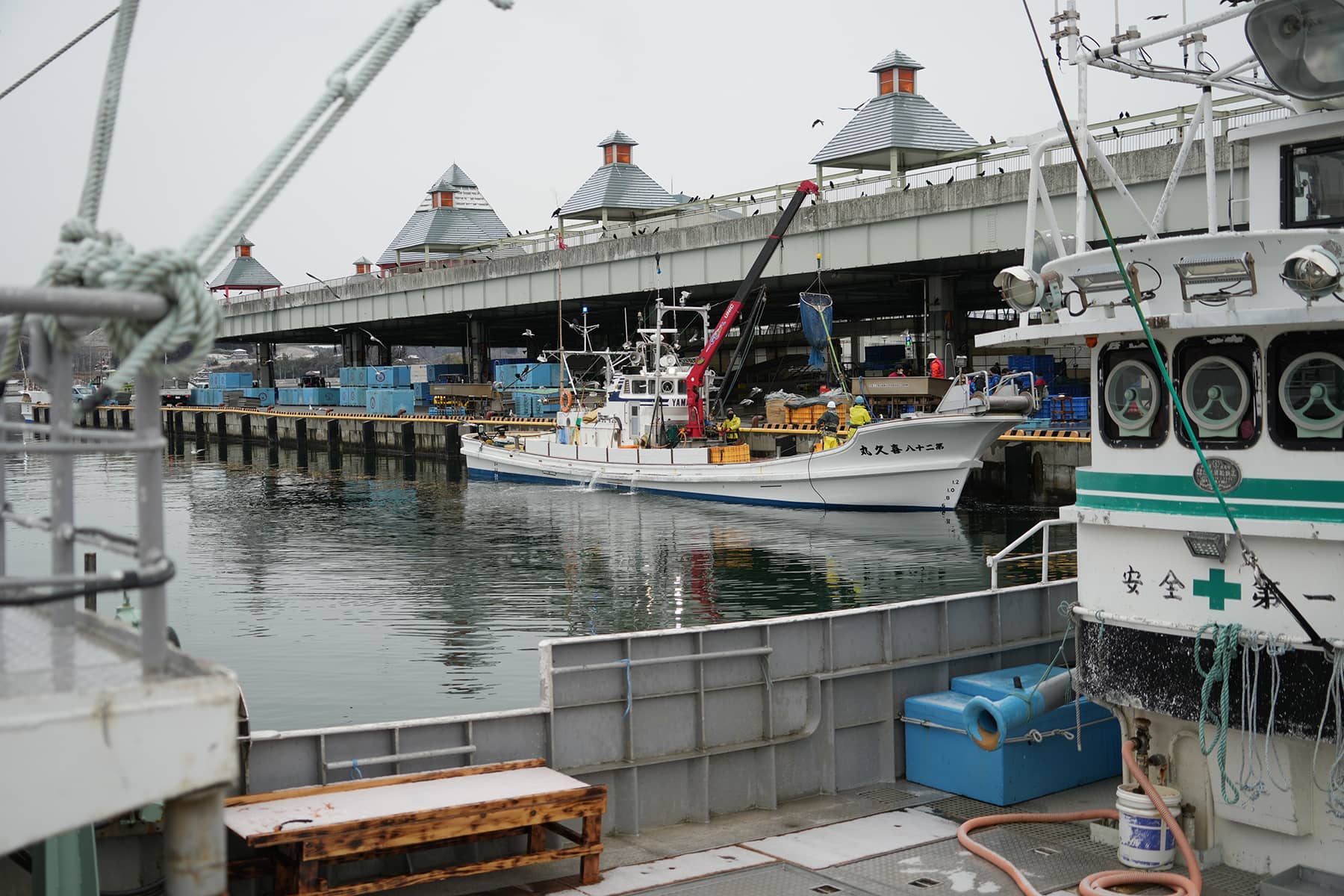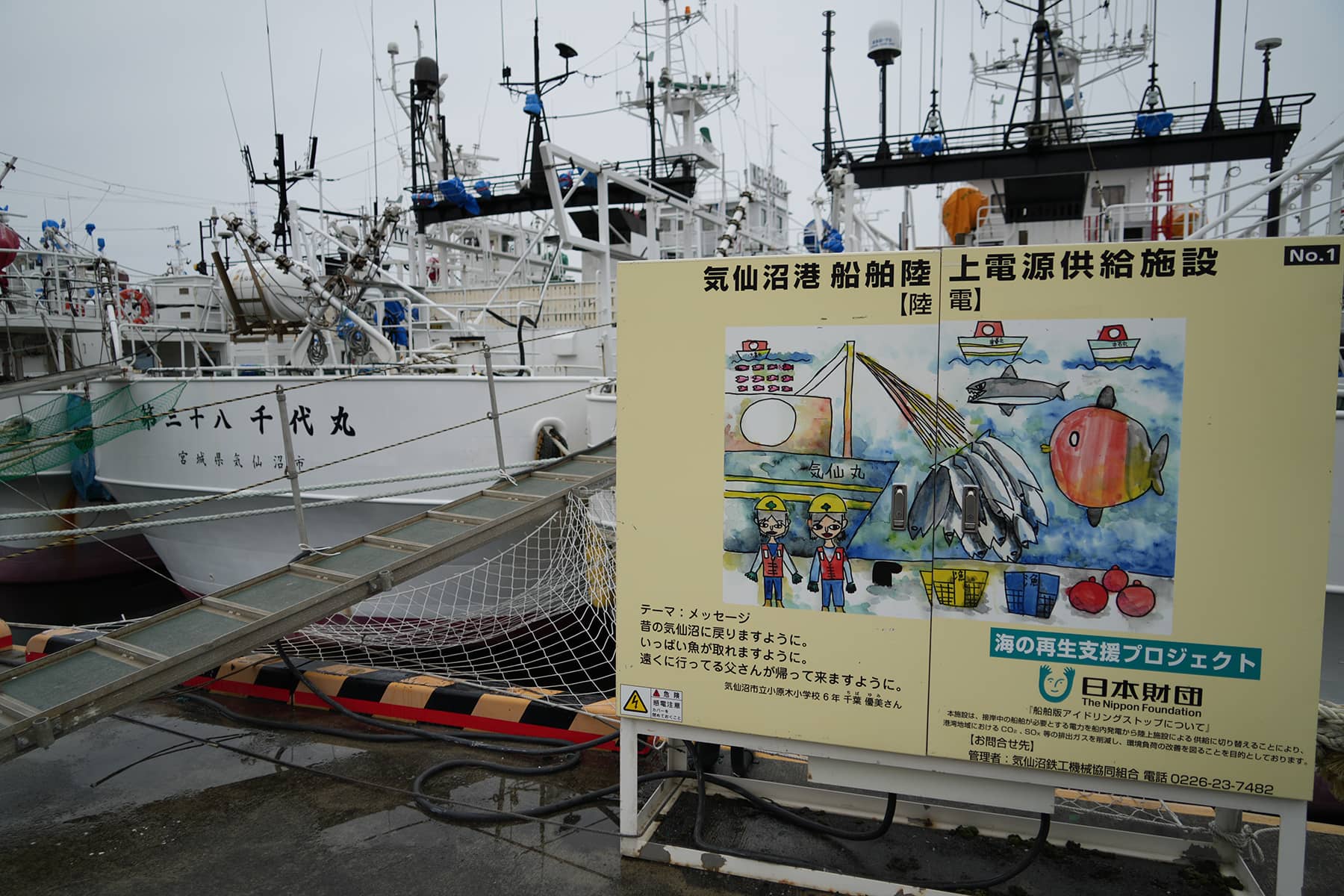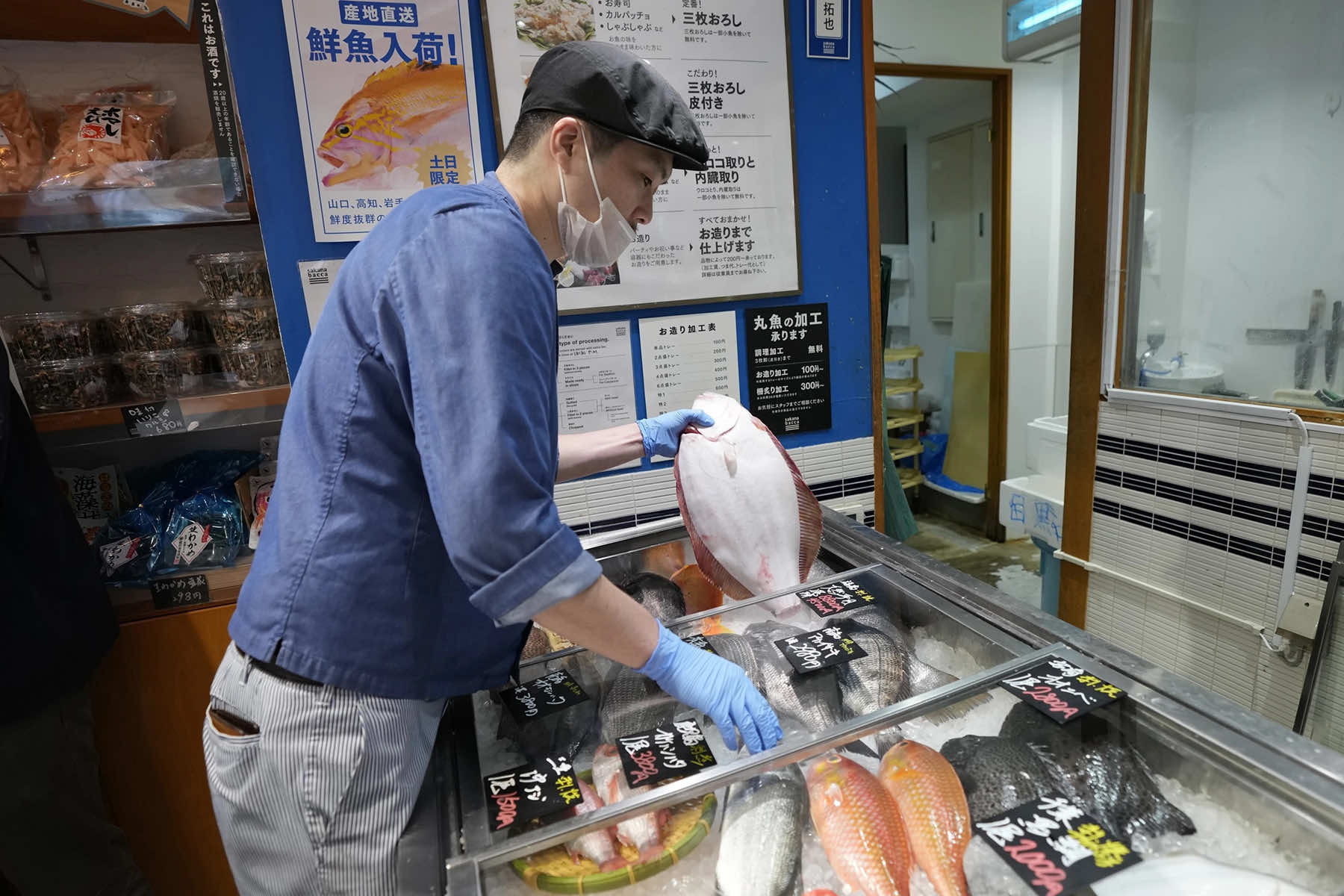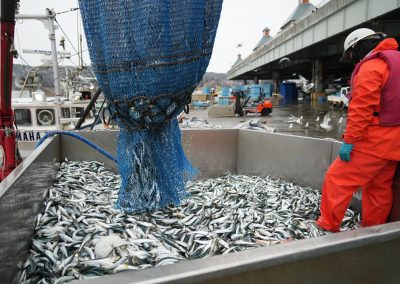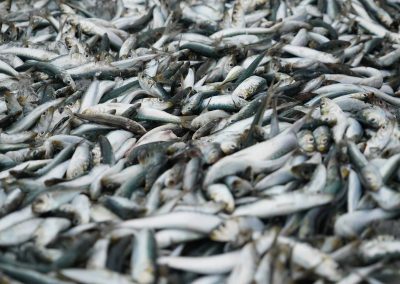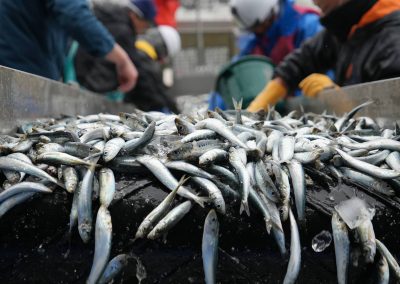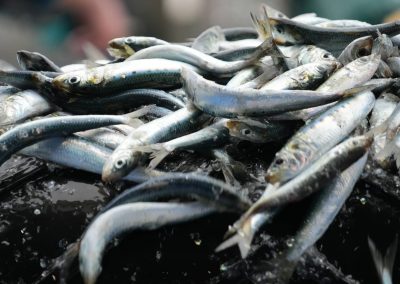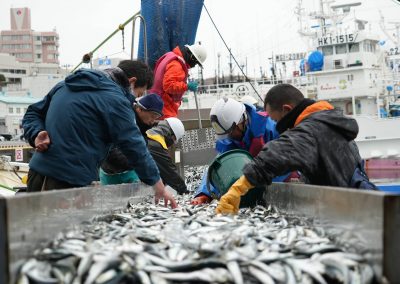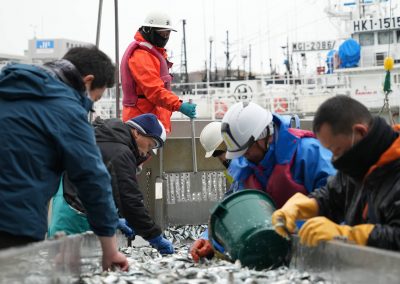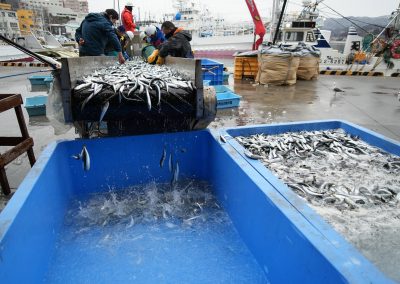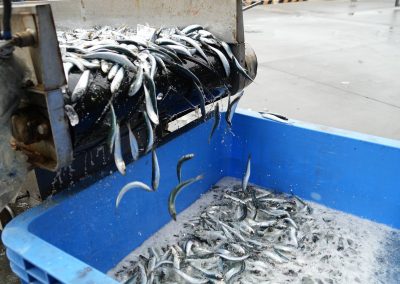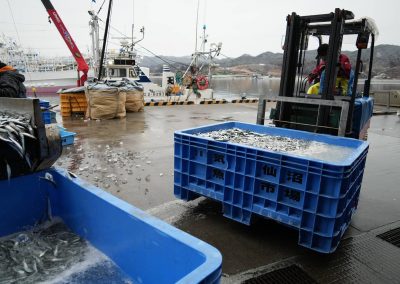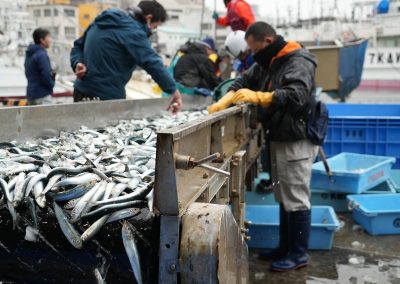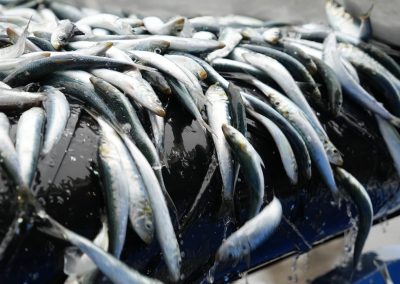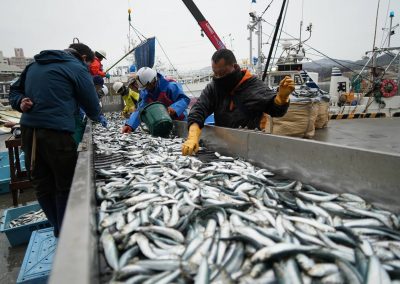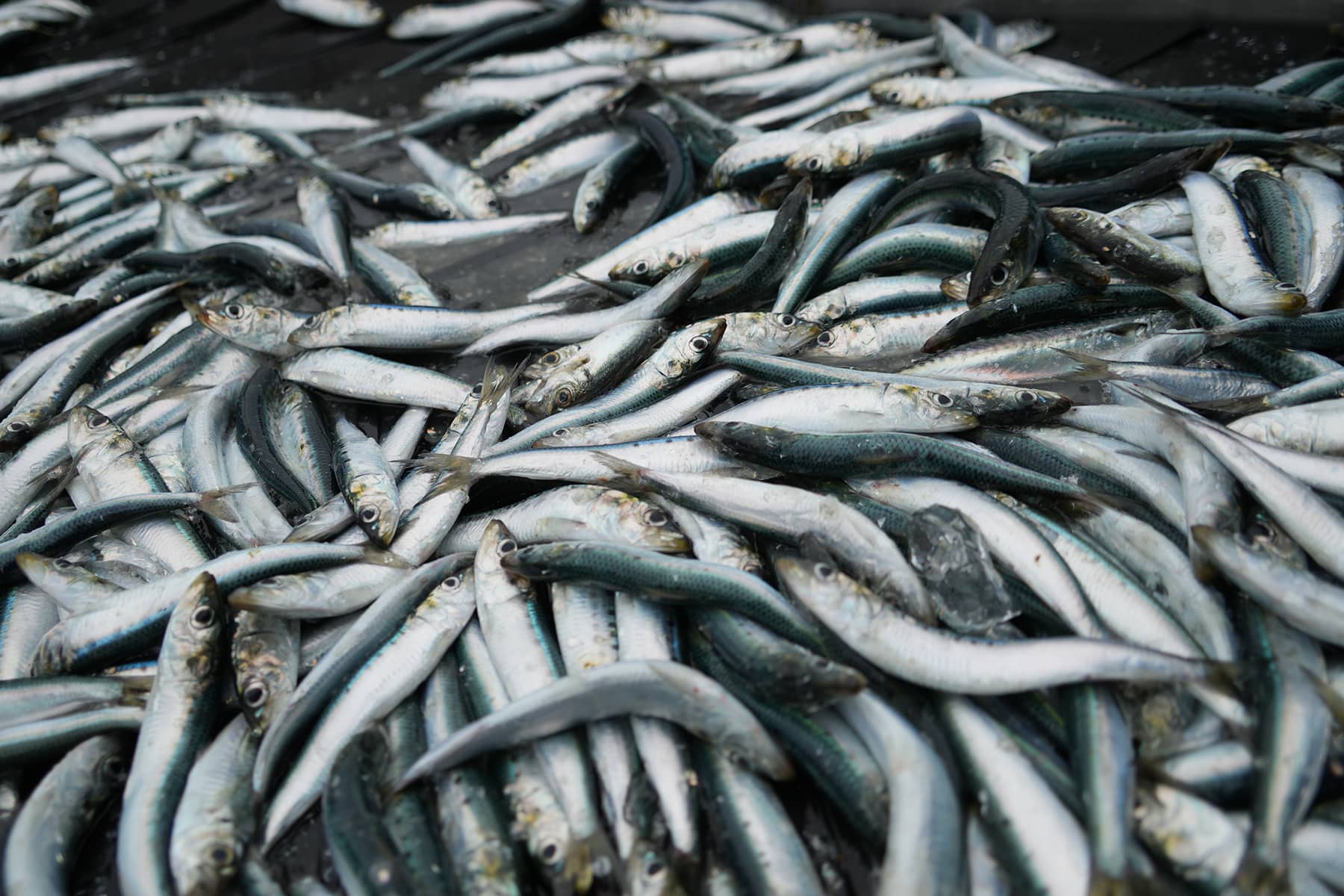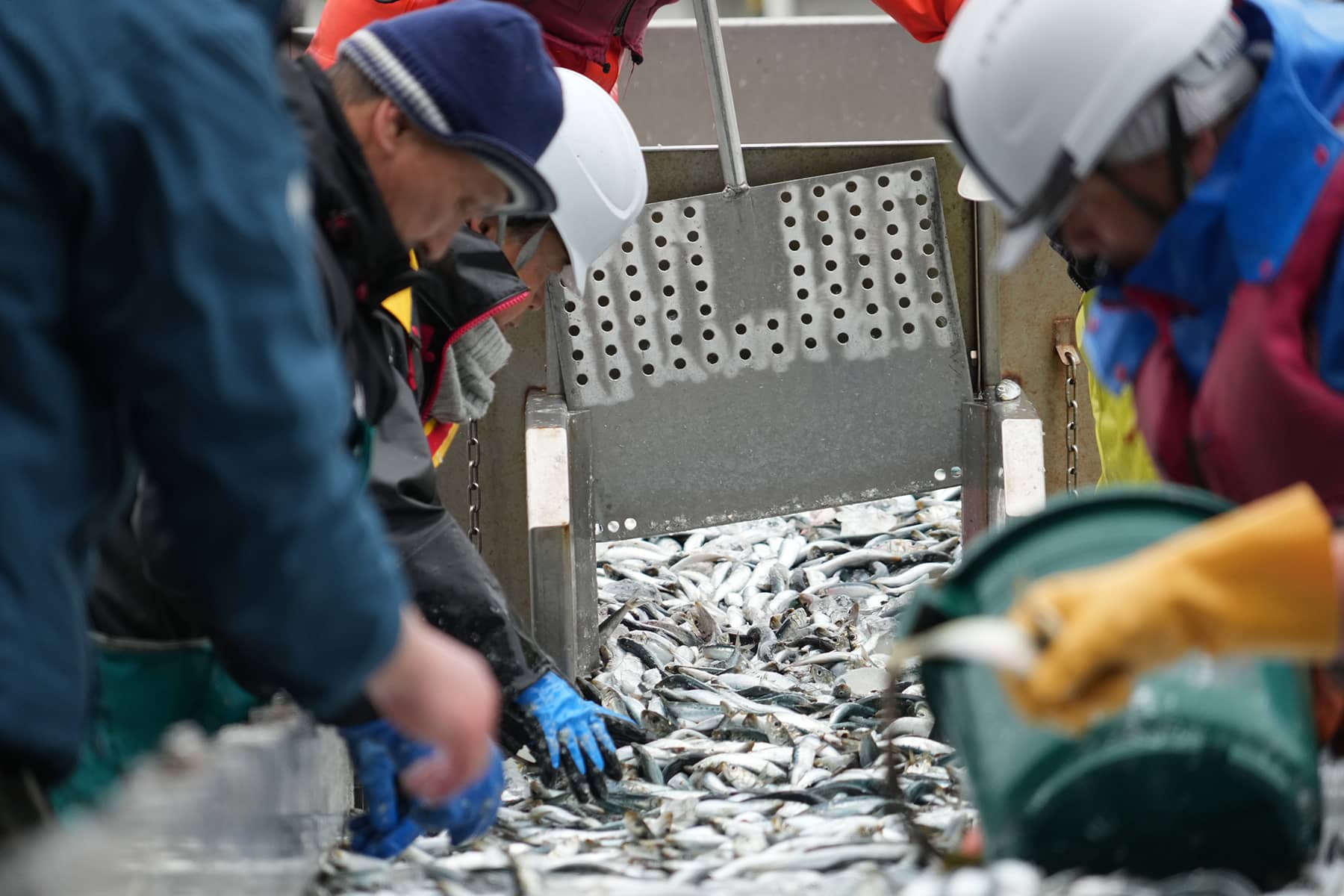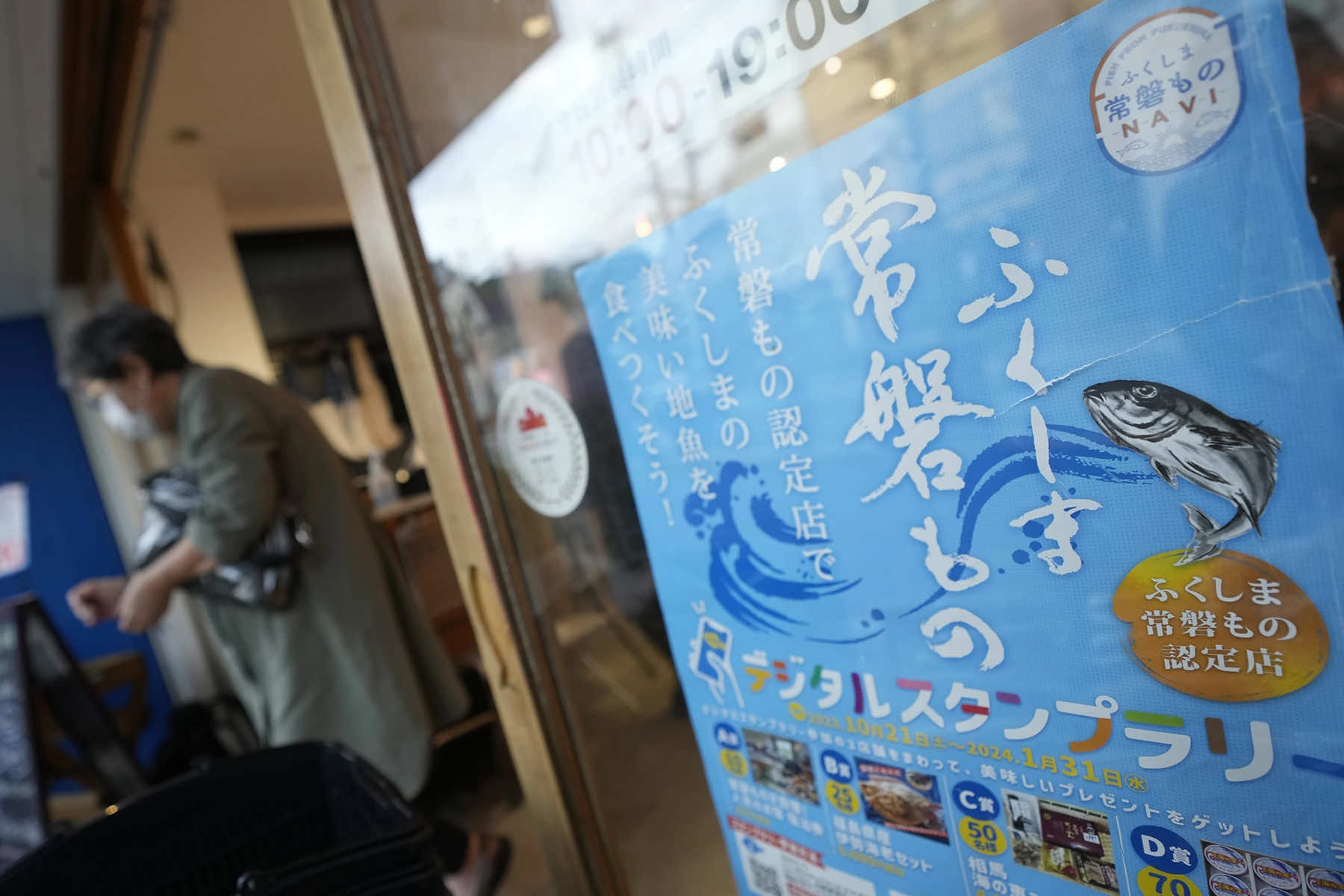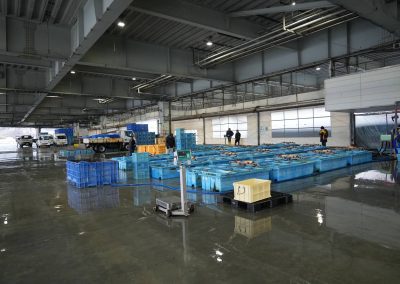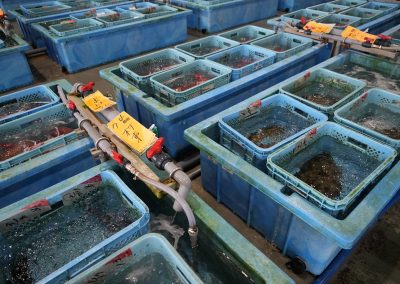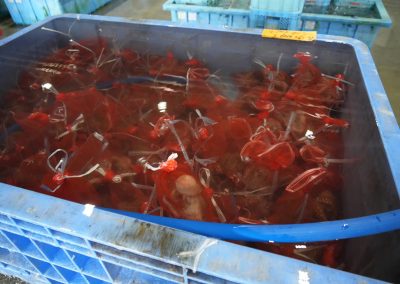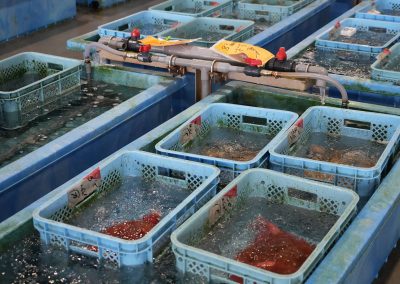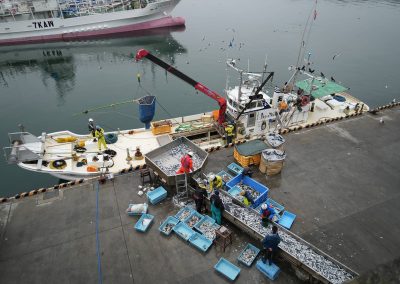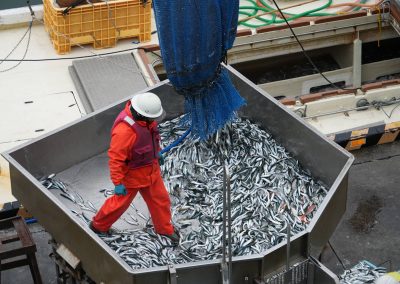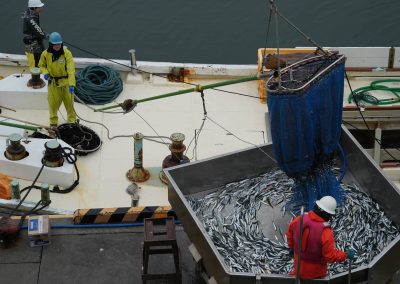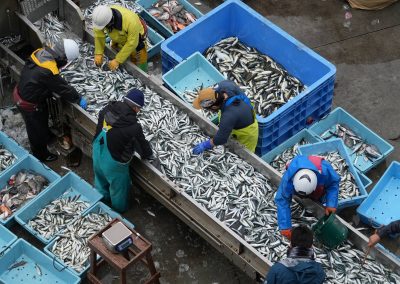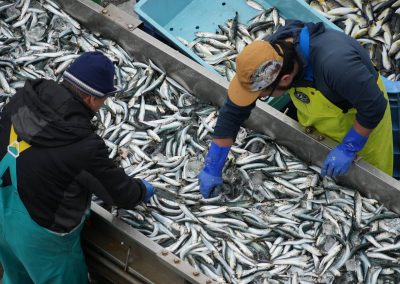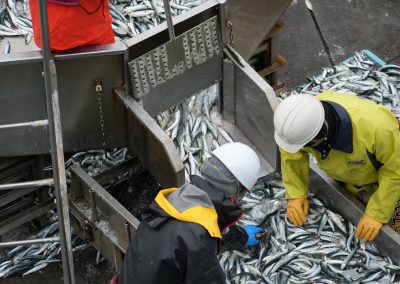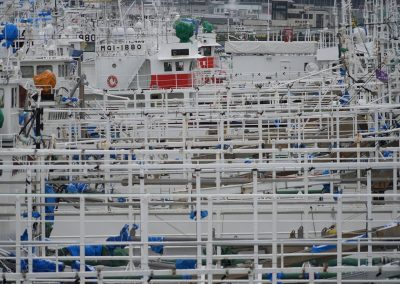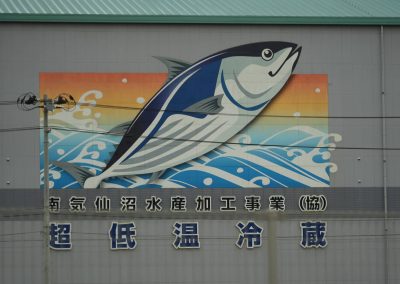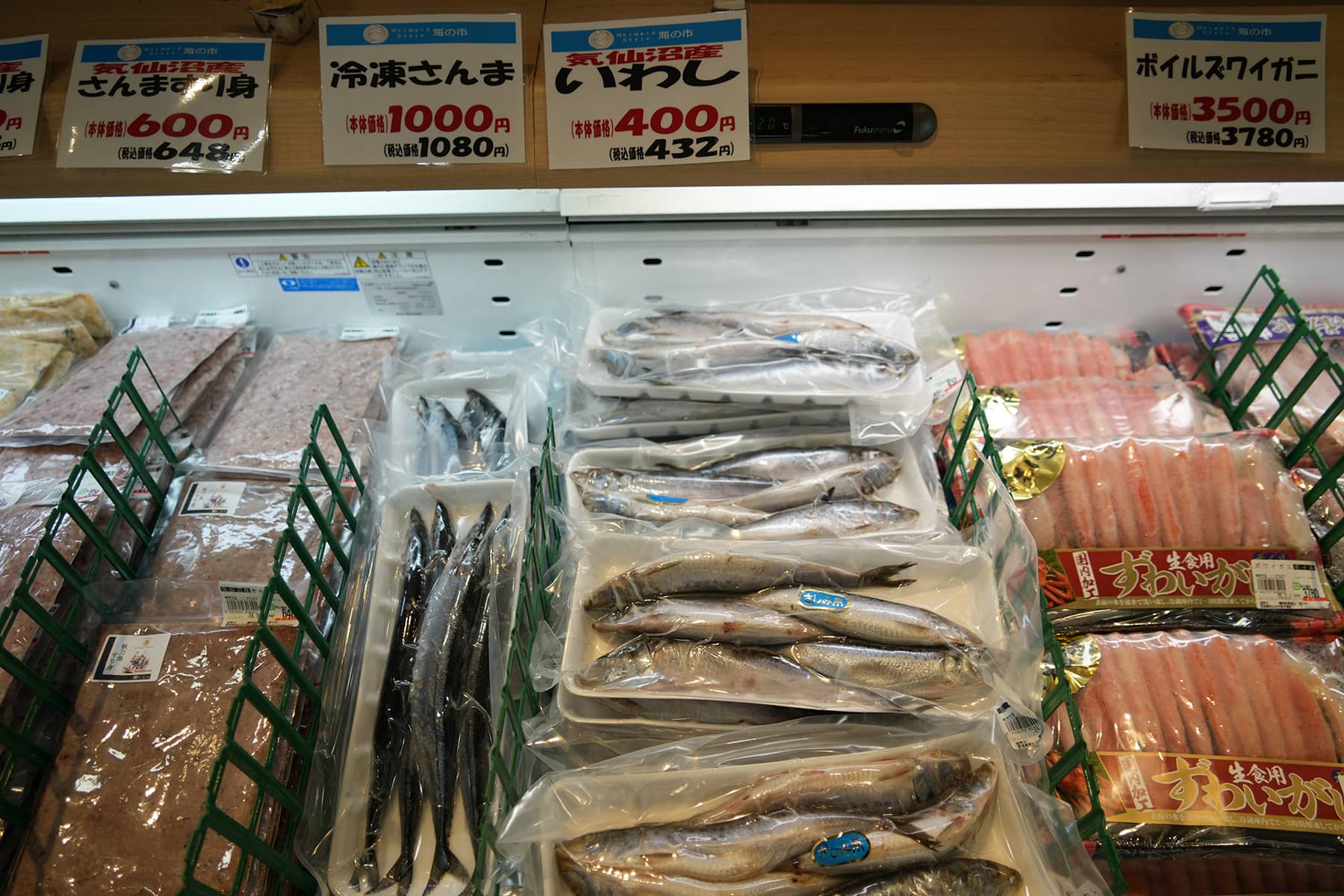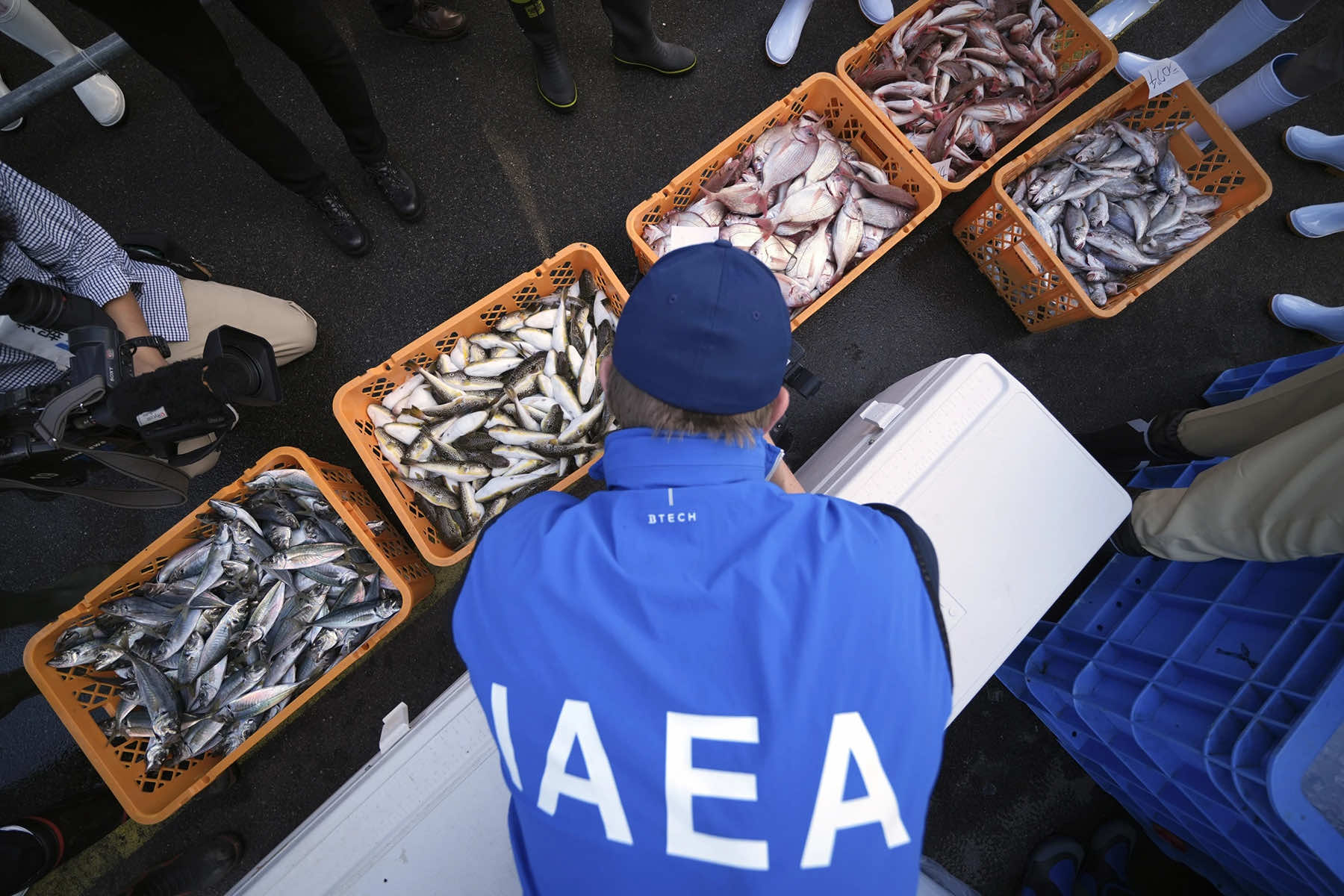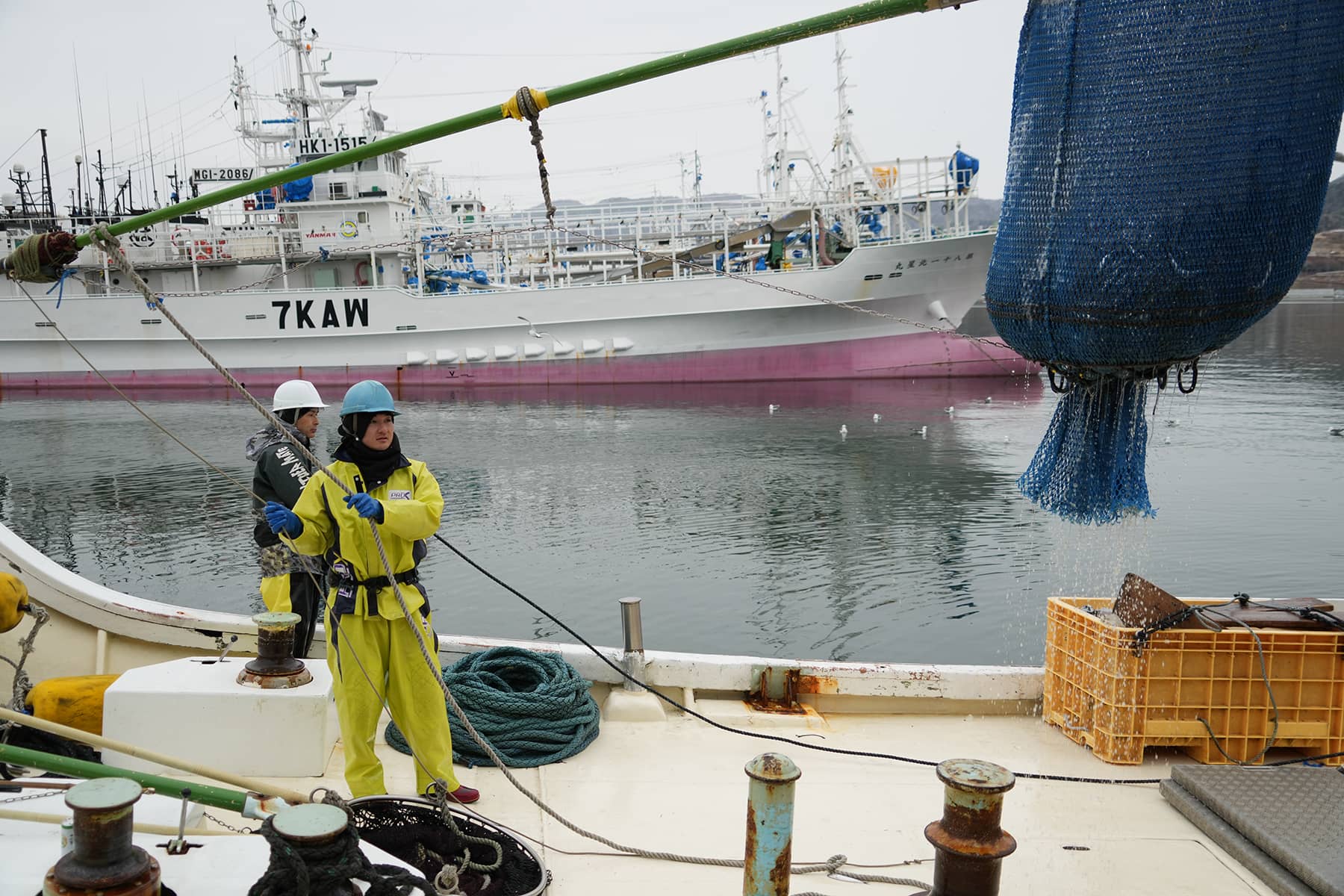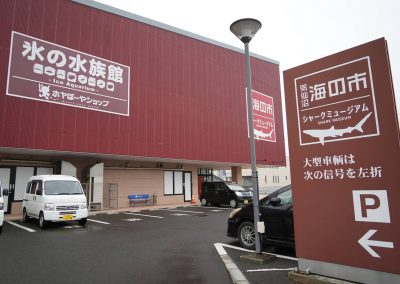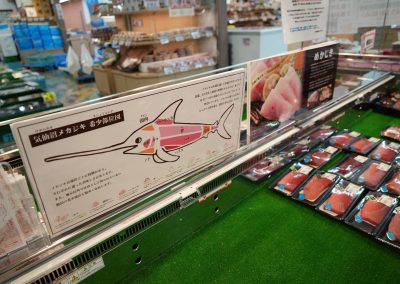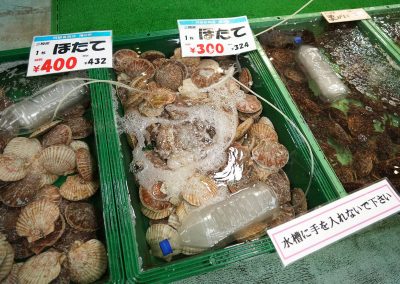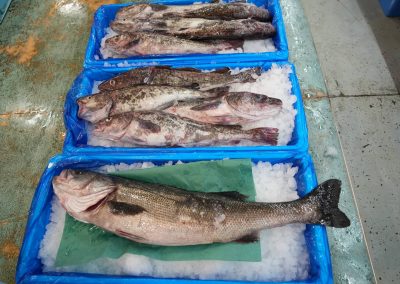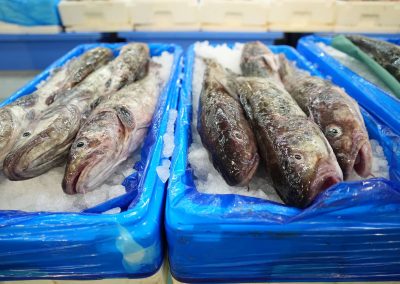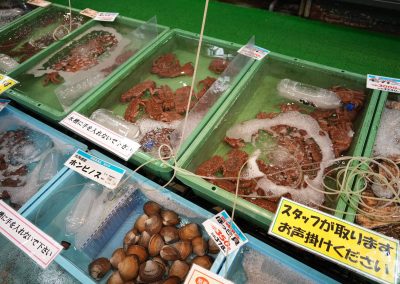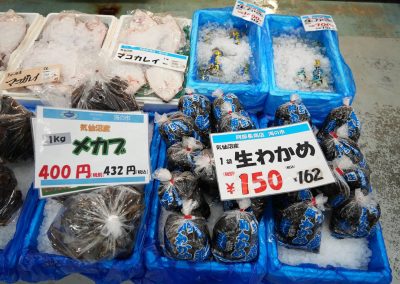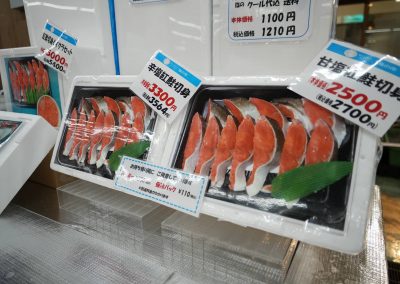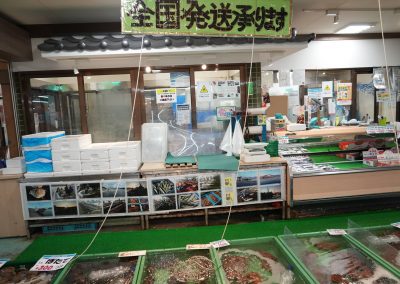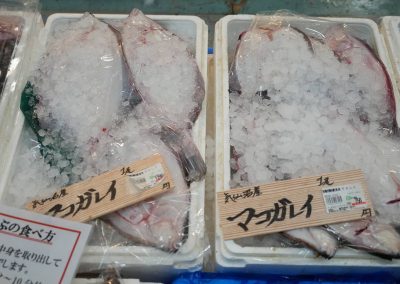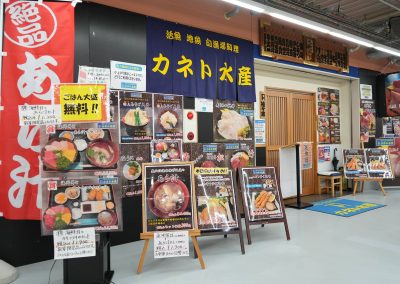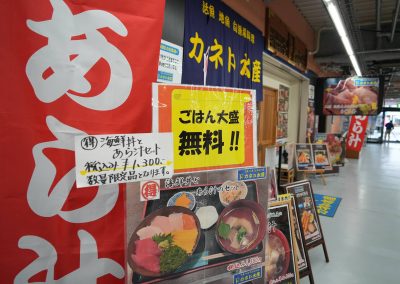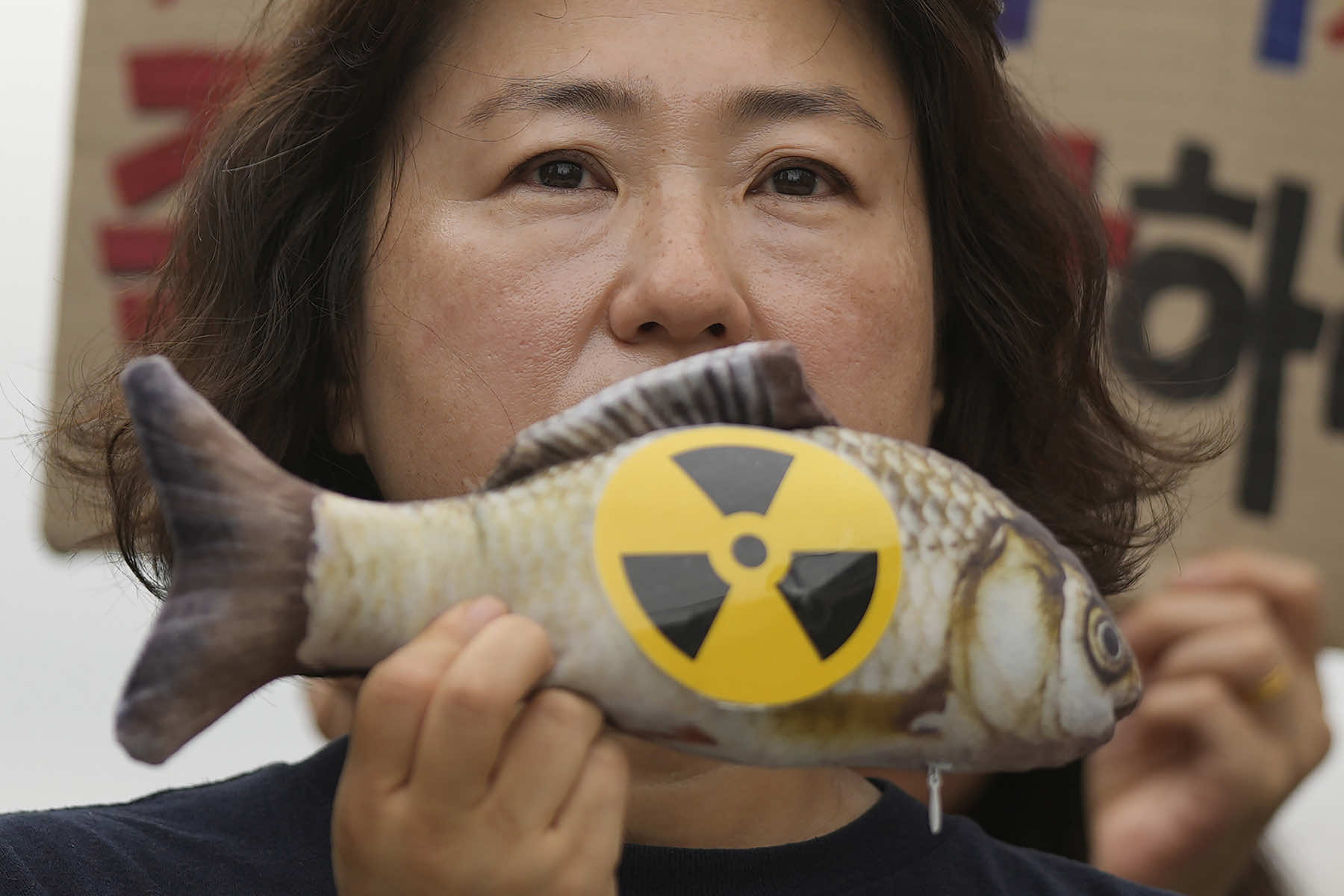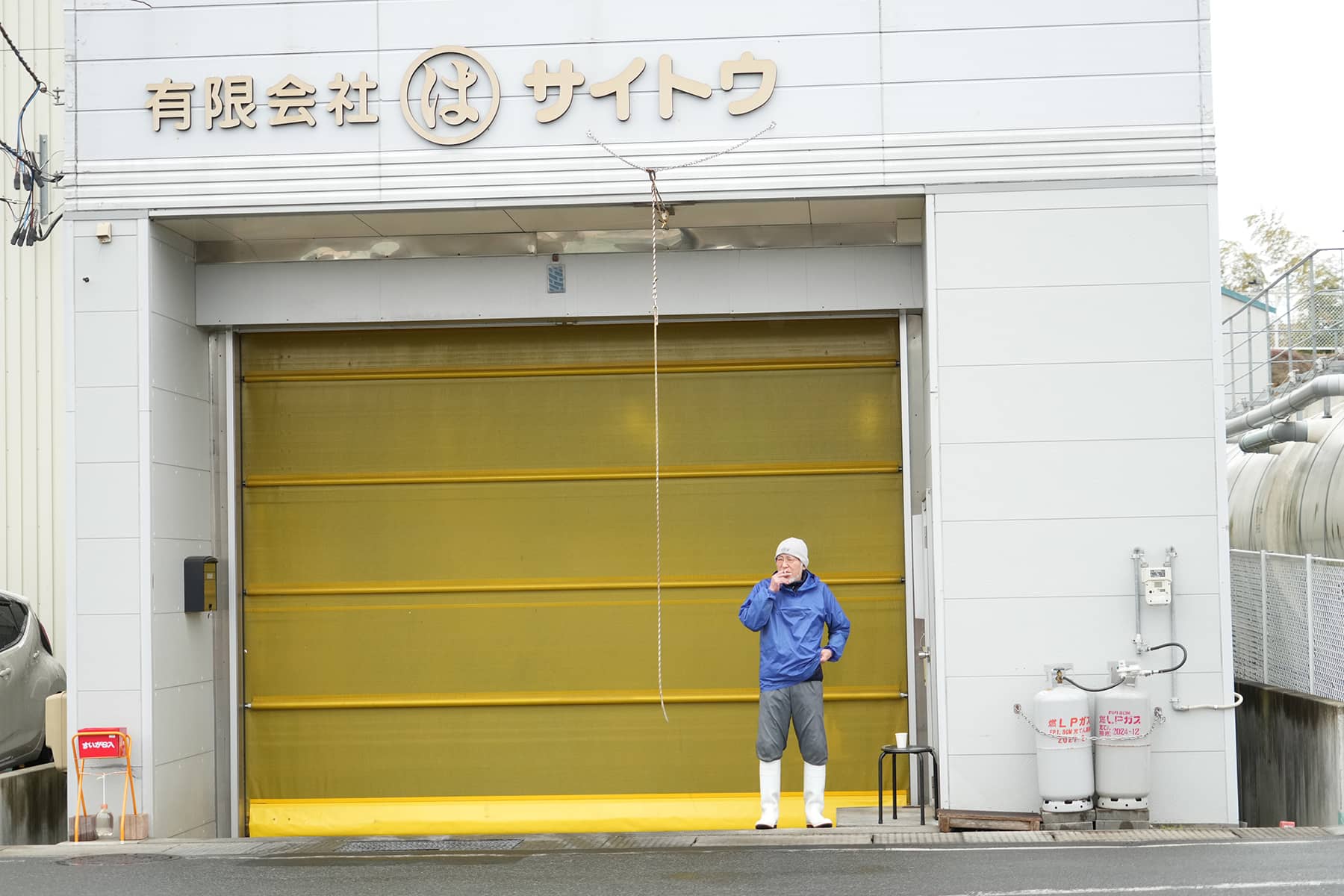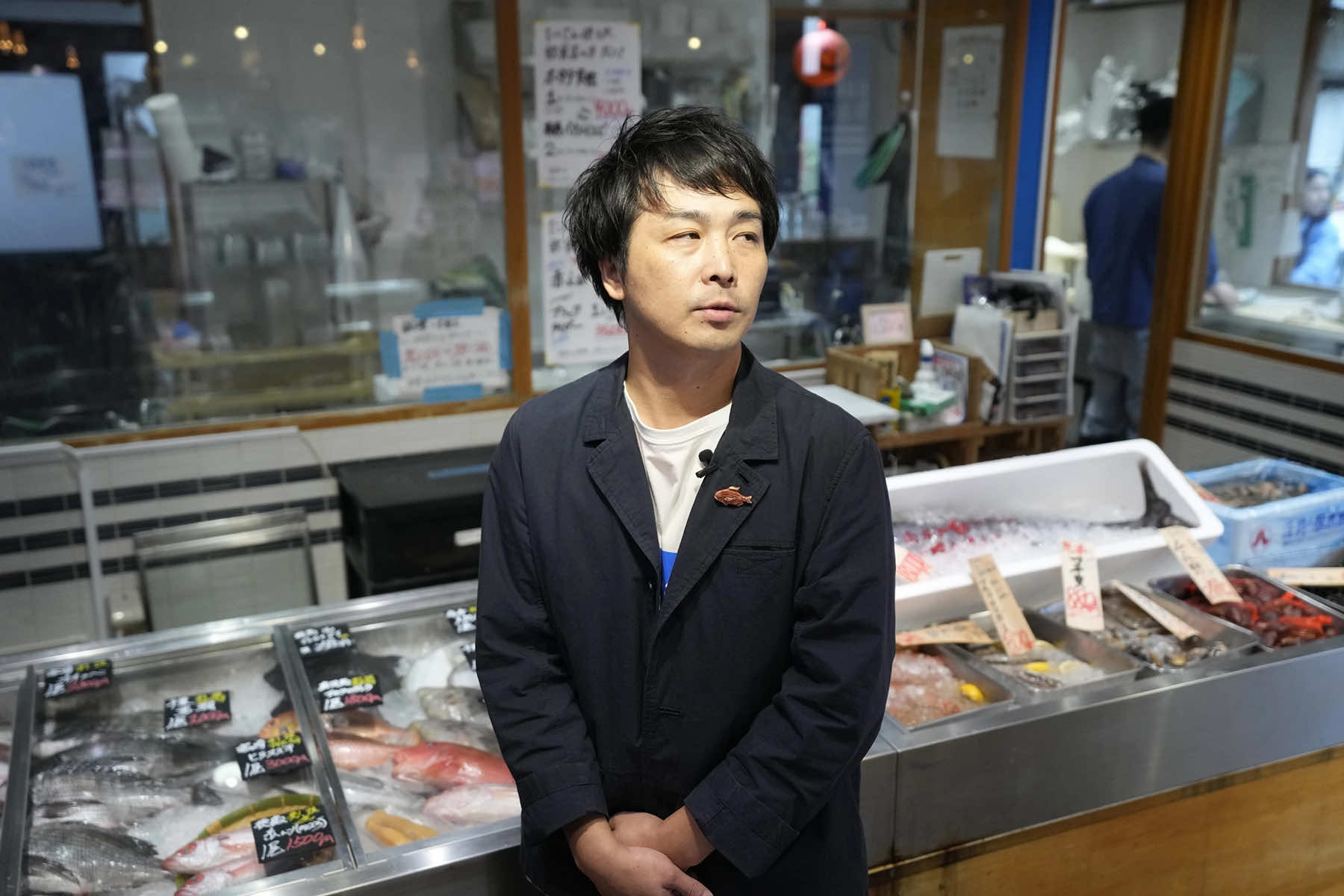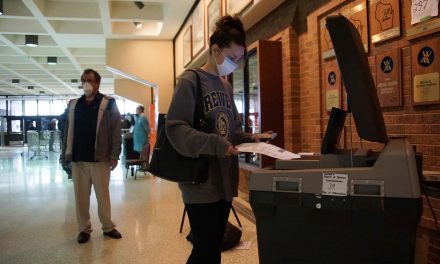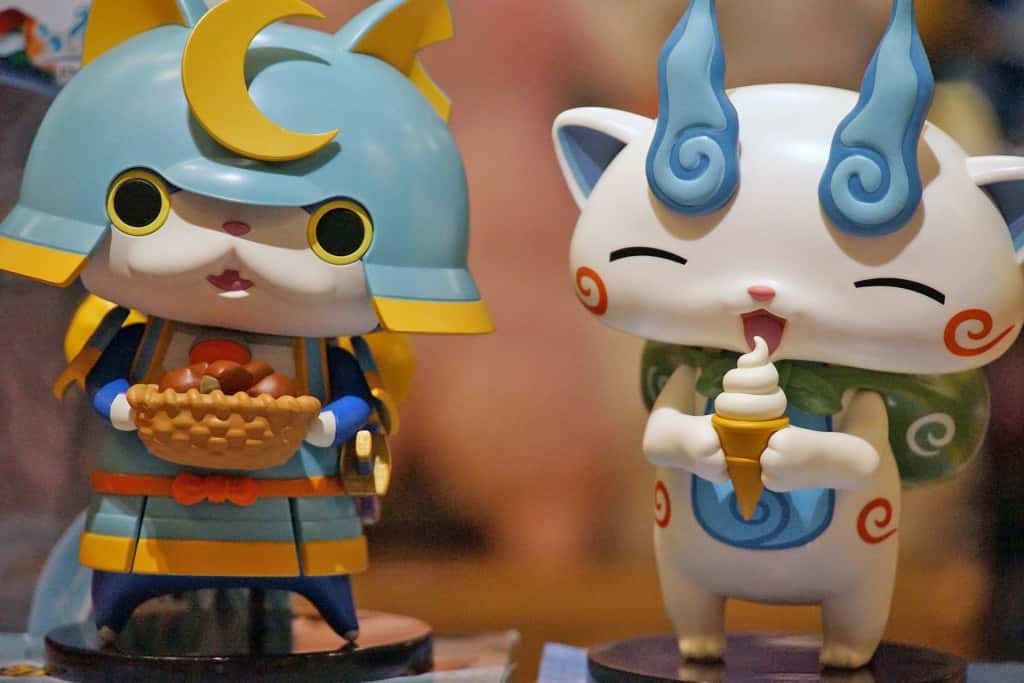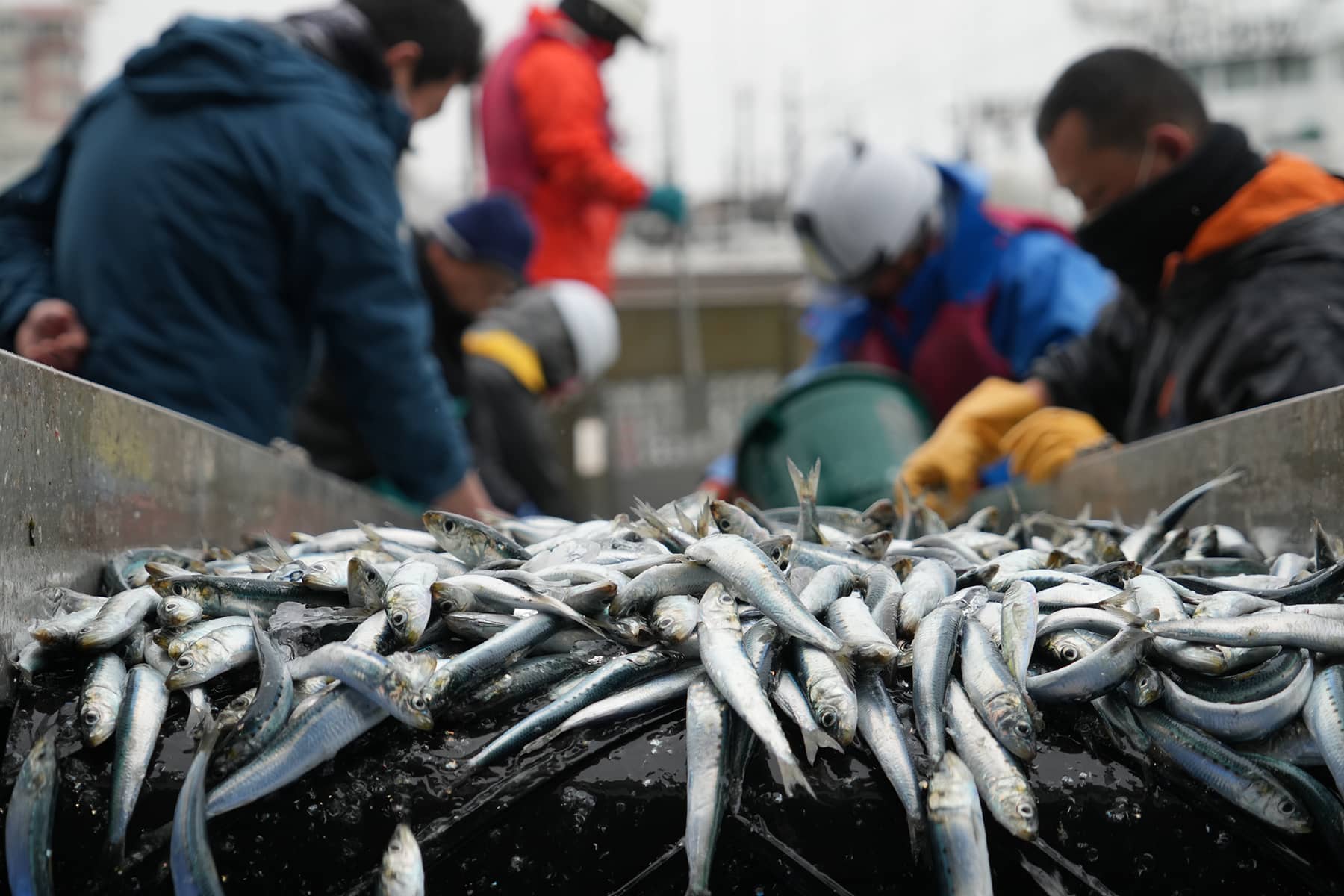
Local fishing communities feared the worst when the wrecked Fukushima nuclear power plant began discharging treated radioactive wastewater into the sea.
Instead of a business calamity, however, consumers from across the nation have supported the region by eating more fish. Besides boosting a fragile industry, the demand has helped mitigate the impact of China’s ban on Japanese seafood, though there are worries about the future of the water release.
“So far, I haven’t heard anyone raising safety concerns over the treated water release. I’d say zero,” Kazuto Harada, who works at Marufuto Fish Store near the Onahama Port in Fukushima, said as he stood by a tank of lobsters caught nearby. “I’m half surprised, and half relieved.”
Customers nationwide are placing orders, with many asking for “Joban-mono,” or fish from the waters off Fukushima and its southern neighbor Ibaraki. That includes regional favorites flounder and greeneye. By late afternoon, almost all the fresh local catch sells out.
Sumie Nouchi, a Tokyo resident, visited the seafood market after spending time in the area with friends. “I was determined to come here and buy fish on my way home,” she said. Her purchases included rosy seabass, greeneye, squid, and octopus.
It was less about supporting local businesses than because Joban-mono tastes good, she said. “I’m not worried about the treated water discharge. I’ve been checking sampling results and I trust them.”
The Fukushima Daiichi nuclear power plant started releasing treated and diluted radioactive wastewater into the sea on August 24, 2023. Officials said it was necessary because more than 1.3 million tons of radioactive wastewater has accumulated in about 1,000 tanks at the plant since its cooling system was destroyed by a massive earthquake and tsunami in 2011.
Fukushima’s badly hit fisheries community, tourism, and the economy have been slow to recover. The government initially allocated $573 million to support struggling fisheries and seafood processing, and to combat potential reputation damage from the water release.
The local catch today in Fukushima is still about one-fifth of its pre-disaster levels due to a decline in the fishing population and smaller catch sizes. Fishing in the area was returning to normal operation in 2021 when the government announced the water release plan.
Even with the wastewater release, the tanks are estimated to reach capacity in the first half of 2024, and space at the plant will be needed for its decommissioning, which will take decades — if it is ever accomplished.
Before being released, the water is treated to reduce radioactive materials to safe levels. It is then diluted with massive amounts of seawater to make it much safer than international standards.
The release, which is expected to continue for decades, was strongly opposed by fishing groups and neighboring countries, including South Korea, where hundreds have protested. Beijing immediately banned all imports of Japanese seafood. It was a major hit to Japanese seafood producers, processors and exporters — especially those in northern Japan who specialize in scallops and sea cucumbers, which are coveted in China.
China’s seafood ban and reports of its impact on the Japanese fishing industry may have tempered Japanese criticism of the water release and encouraged people to eat more seafood from the region.
“Before the discharge began, we were worried that consumers may stay away from Fukushima fish, but we saw a significant increase of our customers asking for Fukushima fish,” said Futoshi Kinoshita, executive of Foodison, which operates the Sakana Bacca chain. “After China’s ban on Japanese seafood, we are seeing more customers buying not only Fukushima fish but also Japanese seafood in general to support the industry.”
He said fish testing data are key to making consumers confident in the seafood’s safety, but the data alone is not enough. “I believe people who are still concerned about Fukushima fish may develop confidence by seeing their friends or relatives eating it without worry, and I hope the circle of confidence will expand.”
The International Atomic Energy Agency concluded in a July 2023 report that the discharge, if carried out exactly as planned, would cause negligible impact on the environment and human health. The IAEA safety and sampling missions that visited Fukushima after the discharge began said it was going well so far.
The release of a third batch of water began in November 2023 and Tokyo Electric Power Company, the Fukushima plant operator, said everything had moved as planned.
Japan’s government set up a relief fund to help find new markets and reduce the pain of China’s seafood ban. Measures included the temporary purchase, freezing, and storage of seafood and the promotion of seafood sales at home.
Cabinet ministers have traveled to Fukushima to sample local seafood and promote its safety, and the United States Embassy in Tokyo has been helping find new markets, including its military bases in Japan.
Despite the wastewater discharges, auction prices at Fukushima fish markets have remained stable — or even occasionally higher than normal.
But Katsuya Goto, a Fukushima prefectural fisheries official, said that the situation is still fragile.
“Any mishap in the seawater discharges and its sampling results would easily hurt the reputation of the fish, so we have to carefully watch and make sure everything is as planned,” Goto said. “The government and TEPCO have begun this despite local fishers’ opposition, so we must watch and make sure they do it right.”
Months after the discharges began, the support movement has grown steadily. While individual consumers favor ordering fish by mail and shopping at seafood markets, prefectural government cafeterias have started serving Fukushima seafood for lunch.
The Tokyo Metropolitan Government started an “eat and cheer” subsidy campaign in October 2023, joined by 1,000 seafood retailers through the end of December. The campaign targets customers interested in high-priced seafood like lobsters.
In Kyoto, a group of world-renowned Japanese “Kaiseki” cuisine chefs, will develop menus that primarily use Fukushima fish starting early next year. Yoshinori Tanaka at Toriyone, a Kyoto restaurant, and a member of the Japanese Culinary Academy, said dozens of chefs plan to hold tasting events around the country beginning in the spring, and eventually serve their menus at hundreds of restaurants.
“Home-grown farm and fisheries products are indispensable for Japanese cuisine,” Tanaka said. “Of course the safety of the treated water release is a prerequisite to fight off the negative reputation. We are hoping our project can also contribute to addressing safety concerns that some people still have.”
Some experts have warned that efforts to boost Fukushima fish would not last forever and the region needs to have long-term measures to revive the fisheries industry in the region while making sure to avoid any safety lapses.
Fukushima’s fisheries community, tourism, and the economy were badly hit and are still recovering. Local fishing was beginning to return to normal in 2021 when the government announced the water release plan.
The local catch today is still about one-fifth of its pre-disaster levels in Fukushima due to a decline in the fishing population and smaller catch sizes.
Hiroharu Haga, the manager of Ichiyoshi, a fish store at the Lalamew seafood market in Onahama, said customers increased after the treated water discharge, with many ordering from outside of Fukushima, but he cannot meet all the requests because of a limited supply.
“I wish I could sell more local fish,” Haga said.
People from all over Japan are purchasing fish caught in the waters near the Fukushima nuclear power plant.
In August, the power plant started releasing treated and diluted radioactive water from holding tanks into the ocean. The treated water release will continue for many years.
The power complex had suffered some equipment meltdowns after huge waves flooded the area in 2011 following an earthquake. The water release was part of the Tokyo Electric Power Company’s plan to shut the plant.
The Japanese government said the water was safe and it would be continually observed. However, some nations that once purchased a large amount of Japanese seafood are no longer doing so.
China has banned seafood from Japan. The regions of Hong Kong and Macau followed along. In South Korea, many people are concerned that the radioactive water will hurt fish close to home. Many people are no longer buying fish in South Korean markets.
But people in Japan are trying to support the fishing industry by buying fish and seafood.
At a fish store near the Onahama Port in Fukushima, one seller said he was “half surprised, half relieved.” Business owner Kazuto Harada had a tank of live lobsters captured in local waters for sale. He said he has not heard any concerns about the water release.
Fukushima fish sellers are getting orders from all over Japan. People ask for fish called Jouban-mono, which means fish from Fukushima and nearby Ibaraki. The buyers like flounder and greeneye. Almost all the fish at the market is sold by the afternoon.
Futoshi Kinoshita is the executive of Foodison, which owns the Sakana Bacca group of seafood stores. He said usual testing of fishing waters is important. But, he said it is more important that people gain trust in the seafood as they watch friends and family eat the fish.
“I hope the circle of confidence will expand,” Kinoshita said.
The International Atomic Energy Agency approved the Japanese plan to release the water. The group said the water release is going well so far and said the plan will have very little effect on fish and the environment. The latest water release took place last week.
So far, fish prices have remained firm, or even gone up a small amount. However, one fisheries official remains watchful.
Katsuya Goto said any mistake could be very damaging to the public’s trust that the fish is safe.
“The government and TEPCO have begun this despite local fishers’ opposition, so we must watch and make sure they do it right,” he said.
To support the Fukushima seafood business, the Tokyo government launched a three-month campaign in October 2023 called “eat and cheer.” The campaign targeted customers interested in high-priced seafood, such as lobster.
Then, in 2024, a group of well-known Kaiseki chefs in the city of Kyoto will start menus that use fish from Fukushima.
Yoshinori Tanaka is one of the chefs. His restaurant in Kyoto is called Toriyone. He said fish from local waters are a necessity for Japanese food. He urged the government to continue worrying about water safety. He said seeing people enjoy the Fukushima fish on their menus can also help ease “safety concerns that some people have.”
So far, people in the seafood business are pleased with all the support. Experts, however, continue to warn that such goodwill and support programs would not last forever. They suggested developing long-term plans to keep the fishing businesses going – and more efforts to avoid any accidents with the water release.
Today there are many fewer fishermen in the Fukushima area and they bring in fewer fish than before the nuclear disaster in 2011. And with the recent interest in fish from Fukushima, some fish sellers are not able to meet demand.
Hiroharu Haga is the manager of Ichiyoshi, a fish store in Onahama. He said the supply of Fukushima fish is still limited.
“I wish I could sell more local fish,” he said.
3.11 Exploring Fukushima
- Journey to Japan: A photojournalist’s diary from the ruins of Tōhoku 13 years later
- Timeline of Tragedy: A look back at the long struggle since Fukushima's 2011 triple disaster
- New Year's Aftershock: Memories of Fukushima fuels concern for recovery in Noto Peninsula
- Lessons for future generations: Memorial Museum in Futaba marks 13 years since 3.11 Disaster
- In Silence and Solidarity: Japan Remembers the thousands lost to earthquake and tsunami in 2011
- Fukushima's Legacy: Condition of melted nuclear reactors still unclear 13 years after disaster
- Seafood Safety: Profits surge as Japanese consumers rally behind Fukushima's fishing industry
- Radioactive Waste: IAEA confirms water discharge from ruined nuclear plant meets safety standards
- Technical Hurdles for TEPCO: Critics question 2051 deadline for decommissioning Fukushima
- In the shadow of silence: Exploring Fukushima's abandoned lands that remain frozen in time
- Spiral Staircase of Life: Tōhoku museums preserve echoes of March 11 for future generations
- Retracing Our Steps: A review of the project that documented nuclear refugees returning home
- Noriko Abe: Continuing a family legacy of hospitality to guide Minamisanriku's recovery
- Voices of Kataribe: Storytellers share personal accounts of earthquake and tsunami in Tōhoku
- Moai of Minamisanriku: How a bond with Chile forged a learning hub for disaster preparedness
- Focus on the Future: Futaba Project aims to rebuild dreams and repopulate its community
- Junko Yagi: Pioneering a grassroots revival of local businesses in rural Onagawa
- Diving into darkness: The story of Yasuo Takamatsu's search for his missing wife
- Solace and Sake: Chūson-ji Temple and Sekinoichi Shuzo share centuries of tradition in Iwate
- Heartbeat of Miyagi: Community center offers space to engage with Sendai's unyielding spirit
- Unseen Scars: Survivors in Tōhoku reflect on more than a decade of trauma, recovery, and hope
- Running into history: The day Milwaukee Independent stumbled upon a marathon in Tokyo
- Roman Kashpur: Ukrainian war hero conquers Tokyo Marathon 2024 with prosthetic leg
- From Rails to Roads: BRT offers flexible transit solutions for disaster-struck communities
- From Snow to Sakura: Japan’s cherry blossom season feels economic impact of climate change
- Potholes on the Manga Road: Ishinomaki and Kamakura navigate the challenges of anime tourism
- The Ako Incident: Honoring the 47 Ronin’s legendary samurai loyalty at Sengakuji Temple
- "Shōgun" Reimagined: Ambitious TV series updates epic historical drama about feudal Japan
- Enchanting Hollywood: Japanese cinema celebrates Oscar wins by Hayao Miyazaki and Godzilla
- Toxic Tourists: Geisha District in Kyoto cracks down on over-zealous visitors with new rules
- Medieval Healing: "The Tale of Genji" offers insight into mysteries of Japanese medicine
- Aesthetic of Wabi-Sabi: Finding beauty and harmony in the unfinished and imperfect
- Riken Yamamoto: Japanese architect wins Pritzker Prize for community-centric designs
Mari Yamaguchi and MI Staff (Japan)
Lее Mаtz
Norihiro Haruta (AP), Eugene Hoshiko (AP), Hiro Komae (AP), Lee Jin-Man (AP), and Kyodo News (via AP)

